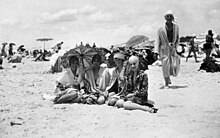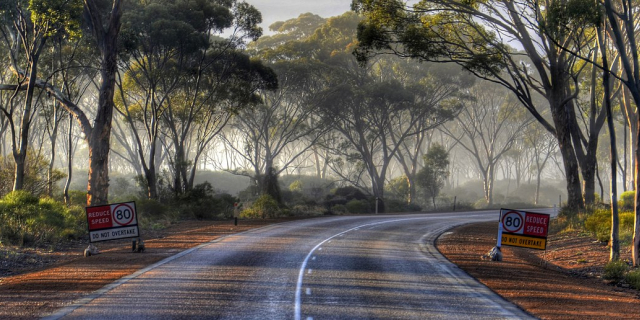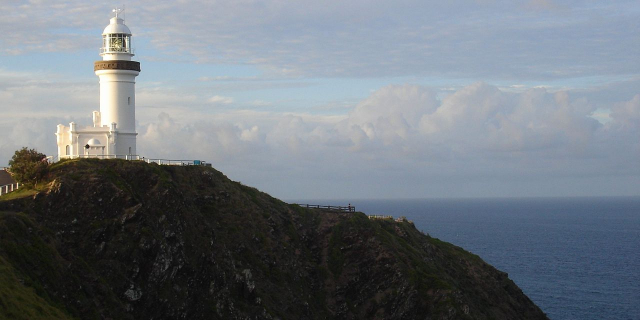Gold Coast, Queensland
The Gold Coast, often referred to by its initials G.C., and officially the City of Gold Coast, is a city in Queensland, Australia. It is Australia’s sixth-largest city, the most populous non-capital city, and the state's second-largest city after Brisbane, with a population over 600,000. The Gold Coast is a coastal city and region located approximately 66 kilometres (41 mi) south-southeast of the centre of the state capital, Brisbane. The city's central business district is located roughly in the centre of the Gold Coast in the suburb of Southport. The urban area of the Gold Coast is concentrated along the coast, sprawling almost 60 kilometres, joining up with the Greater Brisbane metropolitan region to the north and to the state border with New South Wales to the south. Nicknames of the city include the ‘Glitter Strip’ and the ‘Goldy’. The demonym of a Gold Coast resident is Gold Coaster.
The area that became the Gold Coast...Read more
The Gold Coast, often referred to by its initials G.C., and officially the City of Gold Coast, is a city in Queensland, Australia. It is Australia’s sixth-largest city, the most populous non-capital city, and the state's second-largest city after Brisbane, with a population over 600,000. The Gold Coast is a coastal city and region located approximately 66 kilometres (41 mi) south-southeast of the centre of the state capital, Brisbane. The city's central business district is located roughly in the centre of the Gold Coast in the suburb of Southport. The urban area of the Gold Coast is concentrated along the coast, sprawling almost 60 kilometres, joining up with the Greater Brisbane metropolitan region to the north and to the state border with New South Wales to the south. Nicknames of the city include the ‘Glitter Strip’ and the ‘Goldy’. The demonym of a Gold Coast resident is Gold Coaster.
The area that became the Gold Coast was originally inhabited by the indigenous Yugambeh people. The city grew from a collection of small townships, the earliest being Nerang in 1865. From the 1920s onwards, tourism led to significant economic growth in the region, and by 1959 the Gold Coast was declared a city, with its first skyscraper being built in 1960. The Gold Coast boomed from the 1980s onwards with skyscraper construction. This era was defined by the city's ‘white-shoe brigade' developers, neon lights, and organised crime, particularly the yakuza and the Russian mafia. The late 20th century saw the city's tourism diversify with theme park openings, and in the early 21st century became an international destination for film production.
The Gold Coast has a diverse economy with strengths in health, tourism, arts and culture, and construction, with a GDP of $40.9 billion. The city ranks highly as one of the country's cultural and creative hotspots, alongside content creators, a growing video games industry, and leads Australia in startups per capita. The Gold Coast is central to the nation's entertainment industry with a major film and television production industry, leading to the city's metonym of Goldywood. The Gold Coast is also host of the AACTA Awards and the Gold Coast Film Festival.
The Gold Coast is a major tourist destination with a sunny, subtropical climate and has become widely known for its surfing beaches (such as Surfers Paradise), high-rise dominated skyline, theme parks, nightlife, and rainforest hinterland.
 Ladies posing for a photo at Main Beach, ca. 1934
Ladies posing for a photo at Main Beach, ca. 1934 Cars on Gold Coast Highway, ca 1965
Cars on Gold Coast Highway, ca 1965The Gold Coast is the ancestral home of a number of Indigenous clans of the Yugambeh people,[1] including the Kombumerri,[2] Mununjali, and Wangerriburra[3] clans. Europeans arrived in 1823 when explorer John Oxley landed at Mermaid Beach. The hinterland's red cedar supply attracted people to the area in the mid-19th century.
A number of small townships developed along the coast and in the hinterland. The western suburb of Nerang was surveyed and established as a base for the industry and by 1870 a town reserve had been set aside.[4] By 1873, the town reserve of Burleigh Heads had also been surveyed and successful land sales had taken place.[5] In 1875, the small settlement opposite the boat passage at the head of the Nerang River, known as Nerang Heads or Nerang Creek Heads, was surveyed and renamed Southport, with the first land sales scheduled to take place in Beenleigh.[6] Southport quickly grew a reputation as a secluded holiday destination for wealthy Brisbane residents.
Post-World War One Era saw the rise of the "seaside shack". The seaside shack provided the opportunity for the coastal "getaway" with modest investment. From 1914 to 1946, they popped up all along the South Coast. Seaside shacks were exceedingly cheap and were an early use of the concept of recycling. Many were built of disused or second grade timber, all kinds of materials were used for the holiday seaside shack – including fibro cement, metal containers, and left-over farm sheds; even disused trams were sold off as seaside shacks.[7]
After the establishment of the Surfers Paradise Hotel in the late 1920s, the Gold Coast region grew significantly.[8][9] The Gold Coast was originally known as the South Coast (because it was south of Brisbane). However, over-inflated prices for real estate and other goods and services led to the nickname of "Gold Coast" from 1950.[10][11][12][13][14] South Coast locals initially considered the name "Gold Coast" derogatory.[15][16] However, soon the "Gold Coast" simply became a convenient way to refer to the holiday strip from Southport to Coolangatta.[17][18][19][20][21] The Town of South Coast was formed through the amalgamation of Town of Coolangatta and Town of Southport along with the coastal areas (such as Burleigh Heads) from the Shire of Nerang on 17 June 1949 with the effect of having the present-day Gold Coast coastal strip as a single local government area. As the tourism industry grew into the 1950s, local businesses began to adopt the term Gold Coast in their names, and on 23 October 1958 the Town of South Coast was renamed Town of Gold Coast.[22] The area was proclaimed a city, despite the lack of a cathedral, less than one year later on 16 May 1959.[23]
The area boomed in the 1980s as a leading tourist destination. In 1994, the City of Gold Coast local government area was expanded to include the Shire of Albert,[24] becoming the second most populous local government area in Australia after the City of Brisbane.[citation needed]
In 2007, the Gold Coast overtook the population of Newcastle, New South Wales, to become the sixth largest city in Australia and the largest non-capital city.[25]
The Gold Coast hosted the 2018 Commonwealth Games.[26]
































Add new comment